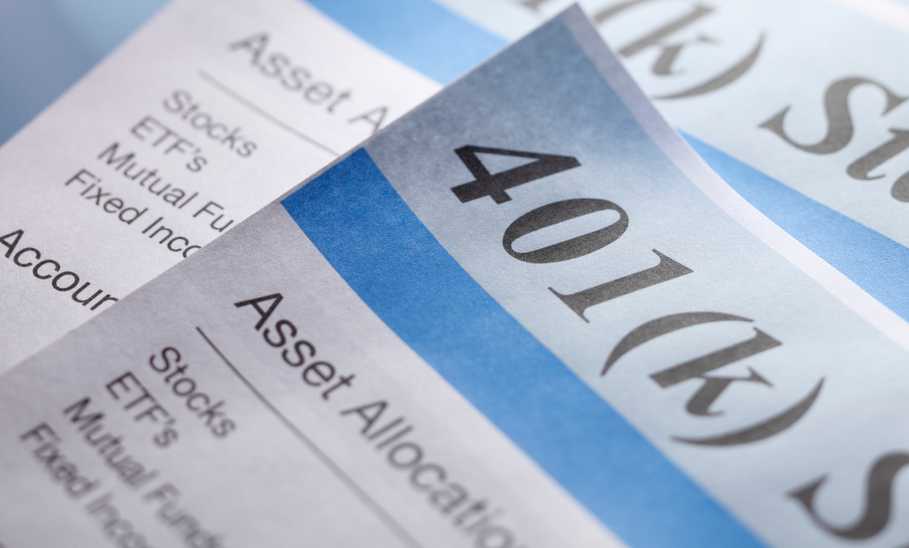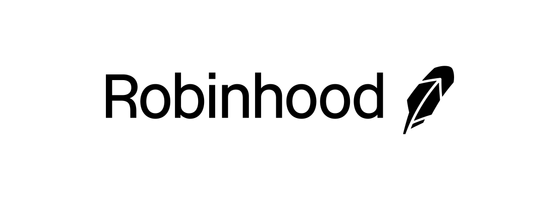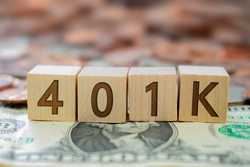Pensions and 401(k)s both provide you with income during your retirement, but there are many important differences between the two plans
An employer-sponsored retirement plan, such as a 401(k), is funded with money you elect to have deducted from your paycheck. You choose how to invest contributions, which are tax deductible, based on what the plan offers. With a pension, however, your employer funds and manages the plan. Pensions are more common in government jobs, while 401(k) plans have become the norm in the private sector.
Pension plan overview
A pension is a defined benefit plan offered by some employers. It promises to provide you with a certain amount of money for life after you retire. Instead of you funding the plan and investing the savings, your employer does it for you. How long you have to work to be vested varies. For example, to qualify for the federal government's pension you will need to work at your government job for at least five years, while teachers in Illinois need to serve for a minimum of 10 years.
Pension plans: Pros and cons
Pros:
- You are not using your own money to save and invest
- Your employer makes investing decisions, taking the burden off you
- You can count on a certain amount of money in retirement
- The funds will be paid out until death, and in some cases to a beneficiary
Cons:
- The pension may not be enough to live on
- You do not have control over the investments
- Bankruptcy can affect pension benefits
- If you change employers the pension may not transfer
Advantages of pension plans
Employees don’t pay into pension plans—employers do on their behalf. If you do not want to make decisions about how much you are going to save from your income and are unsure about investing, a pension plan can provide valuable peace of mind. You will know that your employer is taking on those tasks and that, after being vested, the money will be coming to you after you retire.
Pension plans can also be advantageous if you are struggling to make ends meet and there is not enough money left over to contribute to a 401(k) plan. You will have all of your earnings for other purposes.
After you start to take withdrawals, the funds are typically paid out until death. You may even have an option between single-life and joint-life pensions. If it's single-life, the pension will cover you for life. If it's joint-life, pension payments will continue after your death with the money going to your designated beneficiary.
How much you receive depends on your employer, but the benefit amount is typically based on the number of years you were employed and a percentage of your income. For example, let’s say you work 30 years, and your final average salary is $80,000, then your pension would be 30 x 2% x $80,000 = $48,000 a year. Your guaranteed annual pension income is $48,000.
Disadvantages of pension plans
It is possible that the money you receive from your employer will not be sufficient to meet all of your expenses. If you were used to earning $80,000, $48,000 will be a big reduction. It will be important to prepare with other retirement income such as Social Security or an IRA.
The stability of the company is also a potential concern. If it files for bankruptcy and becomes insolvent, it could affect your pension pay out. The defined benefit plan may be terminated. Although the Pension Benefit Guaranty Corporation may insure some benefits, it could be less than what you were getting. And make sure you check with your employer to understand how changing employers will impact the pension because it likely may not transfer, especially if you’re not changing employers within, say, the federal government.
401(k) plan overview
A 401(k) is an employer-sponsored retirement plan where you have the option to make contributions that are deducted from your paycheck. In some cases, the company will match your contributions up to a certain percentage of your salary. This translates into free money put towards your retirement. For example, your employer may contribute $1 for every $1 you save up to 3% of your salary, then half that for the next 2% of the amount you earn.
401(k) plans: Pros and cons
Pros:
- You maintain control over savings
- Your employer may match funds
- Simple to set up and contribute
- Can help you save on income tax
- You may be able to borrow against the funds in the account
Cons:
- Dedicating a portion of your income can be a burden
- Investment choices can be limited
- Investing decisions can be complicated
- Early withdrawals can be expensive
- If you stop working for the company you will have to repay the loan quickly
Advantages of 401(k) plans
There are many benefits to 401(k) plans. The money you contribute reduces your taxable income, which typically means you will pay less in income taxes. It can even drive you into a lower tax rate.
You select the amount you want to have withdrawn from your paychecks and the money will automatically go into the plan. In 2024, the 401(k) annual contribution limit is $23,000 for employees (those 50 and older can contribute an additional $7,500), and if your employer matches, it's $69,000 for their and your contributions ($76,500 for those 50 and older).
Another advantage of 401(k) plans is that employers allow plan loans. You can take out a maximum of 50% of your savings, or $50,000, whichever is less. You may be able to borrow against your 401(k) to help buy a house or pay for a child’s education. In some cases a Roth 401(k) may be available, too. This variation allows you to fund the account with after-tax dollars. Because you pay taxes immediately, withdrawals are tax-free in retirement.
Disadvantages of 401(k) plans
There aren't many downsides associated with 401(k) plans, but one of the issues is that it is up to you to fund it. You also may not feel comfortable making investment decisions. If you are too conservative, your money may not grow to the amount you need (especially as inflation pushes the costs of goods and services up). And if you're too aggressive, it can put your funds at risk. For this reason, pursuing professional advice though companies like Empower, Retirable, and Beagle can help you navigate your options..
Also, if you withdraw funds before you’ve reached age 59½, you will have to pay an early distribution penalty of 10% in addition to taxes you may owe on the amount you take out from a traditional 401(k).
Taking a loan is not without risks, too. If you lose your job, you may have to pay off the entire loan balance soon afterward. If you don’t, that portion of the loan will be taxed the same as if it were a cash distribution.
Pension vs. 401(k) plan: Key differences
|
| You have no control over savings and investments | You have total control over savings and investments |
| | Amount can fall short of needs |
| Early withdrawals usually not allowed | |
| | |
Savings and investments
Having control over your savings and investments can either be positive or negative, depending on how you feel about the process. With a pension, there's nothing for you to do except collect the funds at retirement. On the other hand, a 401(k) plan must be managed. You will choose how much to contribute and how you want the money invested.
Income
With a pension, you will know how much cash you have to use every month in retirement. That fixed amount enables you to budget your money. How much you withdraw from a 401(k) plan is up to you—and overall, the funds can either be more than enough or less than is necessary to meet your needs at retirement.
Withdrawals
In general, you can start to withdraw your pension at retirement age, which is typically 65. Some pension plans allow for early benefits, starting at 55. In general, you can withdraw funds from your 401(k) after age 59½ without incurring a 10% penalty from the IRS.
Risk
One of the most important distinctions between a pension and a 401(k) is risk. With a pension, you carry no risk because the funds are guaranteed. With the 401(k), you carry it all because the investment decisions are yours. You are also limited to the investment choices offered by the plan, typically a selection of mutual funds and/or exchange traded funds (ETFs).
When is a 401(k) the better choice?
In the private sector, 401(k) plans are much more common than pension plans, so you might not have a choice between the two. The good news is that t contribution limits for 401(k)s are generous. Contributions to a traditional (not Roth) plan also reduce your taxable income and save you money today. When you retire, your tax rate may be lower, so you could save money on that end as well. If your employer also contributes to your 401(k) plan, you get the benefit of free money deposited into your account.
When is a pension plan the better choice?
If you work for an employer that offers a pension plan and a 401(k), you should still contribute to the latter. Remember, employers contribute to a pension plan on your behalf and make all the investment decisions. Having both types of retirement plans is an excellent way to build retirement income. And, of course, you will end up with more to spend.
What are the alternatives to either 401(k)s or pension plans?
Traditional IRA
With a traditional IRA, contributions are tax deductible and earnings grow tax deferred. That means you will only pay taxes on the earnings when you withdraw the money at retirement. In 2024 the annual contribution limit is $7,000,or $8,000 if you are age 50 and above.
Roth IRA
The contributions to a Roth IRA are made with after-tax dollars so there is no up-front tax break, but you don’t pay tax on withdrawals in retirement. Contributions grow tax free. In 2024 the annual contribution maximum is the same for a Roth IRA as a traditional—$7,000, or $8,000 if you are age 50 and older.
Robinhood IRA
Fees
- $0 management fees
- $0 commission fees
- IRA Match Early Withdrawal Fee may apply
SEP IRA
If you are self-employed or have your own business, you have the option to open a simplified employee pension (SEP) IRA, which is similar to a traditional IRA, but has much higher contribution limits. In 2024 you can contribute up to $69,000 or 25% of eligible compensation, whichever is the smaller sum.
TIME Stamp: Consider your entire financial picture
Having sufficient money for retirement is important. If you have the opportunity to participate in a 401(k) plan, take advantage early so that your contributions have time to grow. And if you’re eligible for one, a pension plan is a great way to ensure that you have a fixed and guaranteed income stream after you stop working. To plan properly for retirement, be sure to examine your entire financial picture and Social Security benefits. You may want to increase your savings to know you have enough for the lifestyle you want. If you’ve maxed out on your 401(k), see if you can add an IRA to your assets—and consider non-retirement investments, such as a brokerage account or real estate.
Frequently asked questions (FAQs)
How can I make my 401(k) more like a pension?
One of the benefits of a pension is that it is a guaranteed income stream for life. You can help your 401(k) plan have the same qualities by making sure you have saved and invested enough so that you have sufficient funds for your estimated lifespan.
Is a pension for life?
In general, yes. A pension provides a fixed amount of income, which is typically paid out every month for the duration of your lifespan.
What is the pension system in the U.S.?
Pensions were once more common in the United States than they are today. They are more common in government and union jobs than they are in non-union parts of the private sector, where 401(k)s have become the norm.
Who regulates 401(k) plans?
Among the laws that regulate 401(k) plans are the Employee Retirement Income Security Act (ERISA) and the Setting Every Community Up for Retirement Enhancement Act (SECURE) and its sequel, SECURE 2.0. In addition, the Pension Benefit Guarantee Corporation, a government agency, protects pension benefits of more than 31 million workers and retirees.






